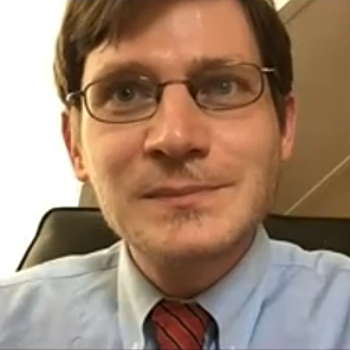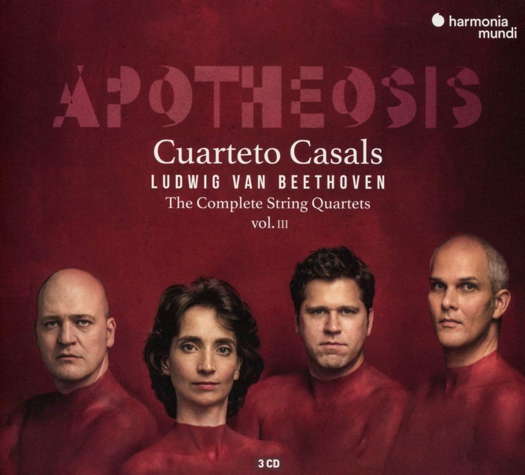 DISCUSSION: Defining Our Field - what is 'classical music' to us, why are we involved and what can we learn from our differences? Read John Dante Prevedini's essay, watch the panel discussion and make your own comments.
DISCUSSION: Defining Our Field - what is 'classical music' to us, why are we involved and what can we learn from our differences? Read John Dante Prevedini's essay, watch the panel discussion and make your own comments.
 DISCUSSION: What is a work? John Dante Prevedini leads a discussion about The performing artist as co-creator, including contributions from Halida Dinova, Yekaterina Lebedeva, Béla Hartmann, David Arditti and Stephen Francis Vasta.
DISCUSSION: What is a work? John Dante Prevedini leads a discussion about The performing artist as co-creator, including contributions from Halida Dinova, Yekaterina Lebedeva, Béla Hartmann, David Arditti and Stephen Francis Vasta.
- Désiré Dondeyne
- John Beckwith
- Ferenc Farkas
- Marilyn Horne
- Manus Carey
- Jacques Charpentier
- Australia
- New Opera Company

Beethoven the Innovator
Cuarteto Casals plays a selection of Beethoven string quartets, reviewed by GIUSEPPE PENNISI
'All of the highest quality.'
This set of three CDs published by harmonia mundi is part of a larger collection where all the Beethoven string quartets, as recorded by the Cuarteto Casals, are presented. The current set, named Apotheosis, includes, on each CD, two quartets of each of the composer's three main stylistic periods. These are: a) the formative period 1782-1802 - Quartet No 5 Op 18 and Quartet No 6 Op 16; b) the heroic period - Quartet No 11 Op 95 and Quartet No 14 Op 131; and c) the mature and innovative period - Quartet No 13 Op 130 with the Grosse Fuge, Op 133.
In this magazine, I have often reviewed live performances of Beethoven quartets and noted the innovations they contain. The most futuristic and, therefore, most modern Beethoven is probably in the last string quartets (and in the Grosse Fuge) composed in the years when the composer was very ill and had complex family problems. An important contribution to highlighting the modernity of the quartets was made by the Academy of France in Rome – Villa Medici, which presented, from 1 to 15 February 2014 the fifth edition of Contre-temps, a festival, internationally recognized and unfortunately dismissed in 2017. (Since then a festival with the same name has taken place annually in Strasbourg.) A feature of Contre-temps (even in the editions now in Strasbourg) is the exploration of the latest trends in contemporary music by making forays into the past. In 2014, the absolute protagonist of the festival was the string quartet, a real 'laboratory' for musical creation with which the greatest composers were confronted: Haydn, Beethoven, Schoenberg, Debussy and, recently, Lachenmann and Boulez. Under the artistic direction of Yann Robin, the program offered the audience the opportunity to listen to the quartets of contemporary composers but also those of Beethoven and Schoenberg. The concerts were held in the Grand Salon of Villa Medici, the Sala Casella of the Roman Philharmonic Academy and the Auditorium Parco della Musica. This year, for the celebrations of the 250th anniversary of Beethoven's birth, a wide selection of the quartets were schedule by the Roman Philharmonic Academy but due to the pandemic only a few concerts were actually held and discussed in this magazine.
Whereas at the 2014 Rome festival, Beethoven quartets were confronted with those by modern authors - most prominently Pierre Boulez, on this CD set, Beethoven is compared with himself in different stylistic periods. I think it is useful to review the three CDs backwards, ie from the last and most advanced works by the composer to those of his formative period.
The opportunity that gave rise to Beethoven's last, and most advanced, creative effort was a commission by a very rich Russian prince, Nikolaus Boris Galitzin. He was an amateur musician and was aware of the quartets composed a decade earlier, commissioned by another Russian aristocrat, Count Andrei Kyrillovic Razumowsky, long time ambassador of St Petersburg to the court of the Habsburgs. In 1822-23 an exchange of letters formalized a rather flexible commission for 'one, two or three quartets' with an honorary of fifty ducats per quartet. Taken by the compositional fury, and by the exploration of new paths never studied (either by himself or by others), he composed five quartets and from one extracted the Grosse Fuge. During his life, he was paid only for the first. After Beethoven's death, the compensation was paid to his heir, his nephew Karl. The CD booklet does not recall this context; in my view, it is relevant to appreciate especially Quartet No 13.
Already in this B flat major quartet, published posthumously, the articulation is in six movements, all with considerable affinity with regard to the general character and structural balance. The quartet seems to correspond to the formal patterns of the classic divertissement: two scherzi juxtaposed with each other, and two slow movements, one of which is 'light' and one 'serious'. It includes, however, important innovations, such as abrupt changes of time and mood in the first movement. Although with explicit references to Mozart and Haydn, it is the search for youth and happiness now vanished as a dream compared to the sad reality of illness and awareness of the approaching end. There is the omen of a certain Proustian scent that pervades the music at the end of the nineteenth and early twentieth century. Consider, for example, the chamber works (not very many) by Erich Wolfang Korngold such as the Quartet in C major. As performed by Cuarteto Casals, the core of the innovation is in the very modern Grosse Fuge.
Listen — Beethoven: Grosse Fuge, Op 133
(CD3 track 6, 12:13-13:11) © 2020 harmonia mundi musique sas :
In the rendering by Cuarteto Casals, the lack of continuity is emphasized properly. This is a characteristic of the Grosse Fuge little understood not only by Beethoven's contemporaries but also for much of the nineteenth century. In fact, it is a bold and innovative sonata in three movements that have a single thematic germ: that of introduction or overtures. The basic theme is taken up several times and assumes various guises, almost anticipating the Wagnerian leitmotiv. In my view, it is an important feature of the Casals' CD.
The second CD includes two of the quartets dedicated to Count Razumowsky who had commissioned them. All of the highest quality. The first, youthful, reflects the style of the time: excellent but without great impulses towards the future.
Listen — Beethoven: Allegretto agitato (Quartet No 11 in F minor)
(CD2 track 4, 2:15-3:15) © 2020 harmonia mundi musique sas :
The second was composed while Beethoven was immersed in the writing of the fourth, fifth and sixth symphonies: they are, therefore, imposing, epic and grandiose, but do not have the innovative charge of the last cycle.
Listen — Beethoven: Presto (String Quartet No 14 in C sharp minor)
(CD2 track 9, 1:49-2:38) © 2020 harmonia mundi musique sas :
More traditional but very skilled are the quartets on the first CD. In the Casals' rendering the Quartet No 5 in A major is a full eighteenth century work.
Listen — Beethoven: Menuetto (String Quartet No 5 in A)
(CD1 track 2, 0:00-0:42) © 2020 harmonia mundi musique sas :
In Quartet No 6 in B flat major, the Adagio is very engrossing.
Listen — Beethoven: La Malinconia (String Quartet No 6 in B flat)
(CD1 track 8, 2:04-3:04) © 2020 harmonia mundi musique sas :
In short, this is not a celebrative CD set for the Beethoven 250 anniversary but a good and effective way to compare the composer's road through different styles during a lifetime of work.
Cuarteto Casals' members are violinists Vera Martínez Mehner and Abel Tomàs Realp, viola player Jonathan Brown and cellist Arnau Tomàs Realp. The quartet is based in Barcelona.
Copyright © 12 September 2020
Giuseppe Pennisi,
Rome, Italy

CD INFORMATION: APOTHEOSIS - CUARTETO CASALS - BEETHOVEN
FURTHER INFORMATION: LUDWIG VAN BEETHOVEN
FURTHER INFORMATION: HARMONIA MUNDI
FURTHER ARTICLES ABOUT CHAMBER MUSIC


